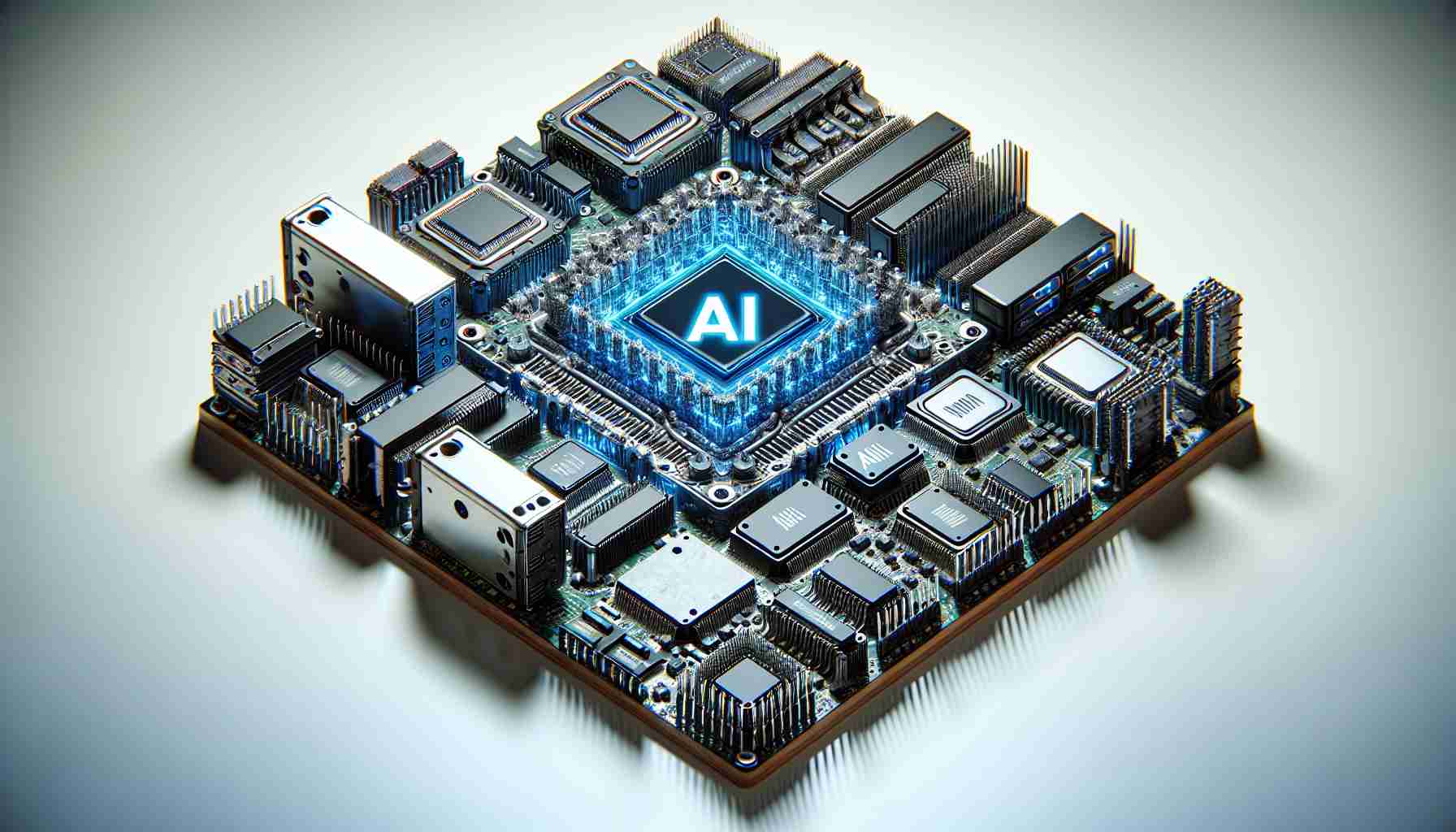Micron Technology Inc., a prominent manufacturer of computer memory chips in the United States, has witnessed a remarkable surge in its stock value, propelled by a robust revenue projection for the current quarter. This optimistic outlook is fueled by the escalating demand for artificial intelligence (AI) hardware, marking a pivotal moment for the semiconductor industry.
The landscape of technological advancements has paved the way for Micron’s success, with the company projecting a fiscal third-quarter revenue between $6.4 billion and $6.8 billion, exceeding market expectations. This surge underscores the profound impact of AI on the semiconductor market and solidifies Micron’s position as a key player in this domain.
Transitioning from a period of decline attributed to waning interest in personal computers and smartphones, Micron and its competitors have embraced the burgeoning AI market as a driving force behind their resurgence. This strategic shift has catalyzed growth and profitability, breathing new life into the memory chip industry.
Sanjay Mehrotra, the CEO of Micron, exudes confidence in the company’s trajectory, emphasizing their significant advantages in leveraging AI’s potential. With Micron’s shares surging by 15% in after-hours trading post revenue forecast announcement, the market acknowledges the company’s strategic positioning within the semiconductor space.
To capitalize on the opportunities presented by AI, Micron actively focuses on ensuring a robust supply of high-performance memory components vital for AI software development. Collaborating with Nvidia Corp., Micron harnesses advanced high-bandwidth memory (HBM) technology, particularly HBM3E, to enable the seamless operation of AI software in data centers. The novelty and scarcity of HBM3E contribute to its higher valuation compared to traditional memory chips, underscoring Micron’s commitment to innovation.
The integration of HBM3E into Nvidia’s AI accelerators has yielded substantial results, with Micron reporting its first revenues from this cutting-edge technology in the latest quarter. The company anticipates significant revenue generation from HBM products in fiscal 2024, with a notable portion of chip production already accounted for in 2025 sales.
AI software development heavily relies on memory capabilities to process vast amounts of data efficiently. Micron and its peers have responded to this demand by crafting specialized chips that facilitate rapid communication with other components, outpacing the performance of conventional memory chips. This innovative approach underscores Micron’s dedication to advancing technology and meeting the evolving needs of the industry.
In conclusion, Micron Technology’s strategic alignment with the AI market heralds a new era of growth and innovation. As the company navigates the dynamic semiconductor landscape, its commitment to excellence and technological advancement positions it as a frontrunner in shaping the future of AI hardware.
FAQs:
1. Quelle est la principale raison derrière la prévision de revenus solides de Micron ?
Micron attribue sa projection de revenus robuste à la forte demande de matériel d’intelligence artificielle (IA).
2. Comment s’est comportée l’action de Micron après l’annonce ?
Les actions de Micron ont augmenté de 15 % dans les échanges après les heures de bourse suite à la publication de la prévision de revenus solides.
3. Quel rôle le module de mémoire à large bande passante (HBM) joue-t-il dans l’activité de Micron ?
Micron utilise HBM, en particulier HBM3E, en conjonction avec les puces de Nvidia Corp. pour développer des logiciels d’IA par les opérateurs de centres de données.
4. Comment Micron a-t-il diversifié ses offres de produits ?
Micron s’est diversifié dans de nouveaux marchés tels que les centres de données, les automobiles et autres appareils électroniques pour réduire sa dépendance aux smartphones et aux ordinateurs personnels.
5. Quelle est l’importance du développement de logiciels d’IA pour les fabricants de puces mémoire ?
Les logiciels d’IA reposent fortement sur la mémoire en raison du traitement d’un grand nombre de paramètres. Pour optimiser les performances, les fabricants de puces ont développé des puces qui facilitent une communication plus rapide avec d’autres composants.
Sources: Bloomberg LP.
The source of the article is from the blog lokale-komercyjne.pl
